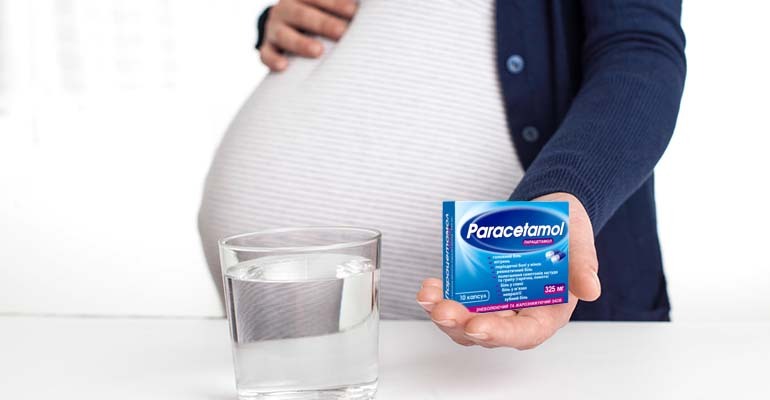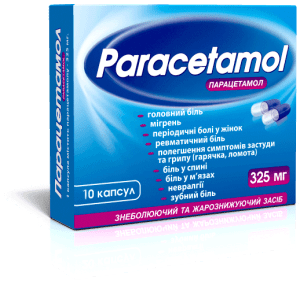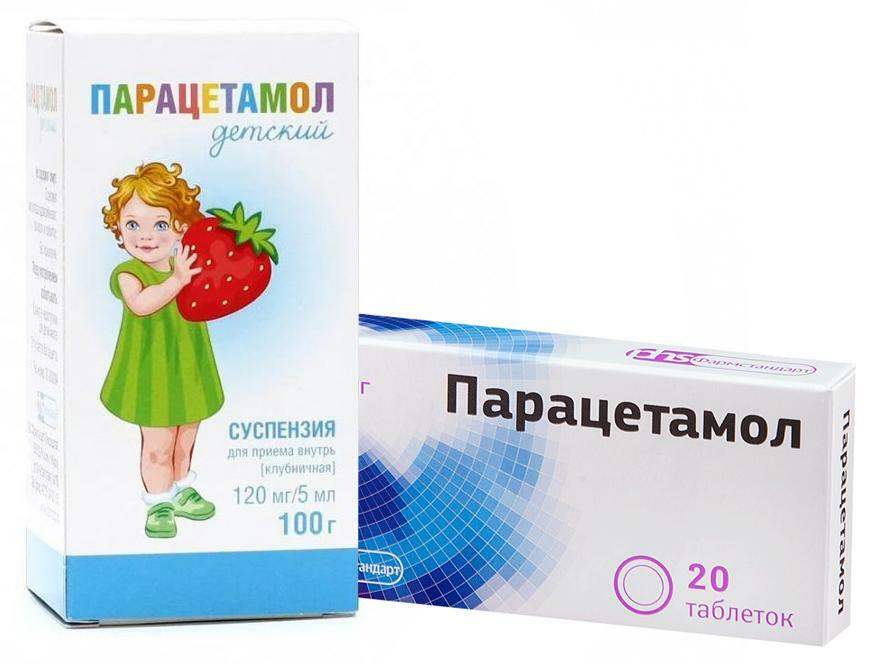Content
- Indications for the use of Paracetamol during pregnancy
- Paracetamol in the first trimester of pregnancy
- Paracetamol in the second trimester of pregnancy
- Paracetamol during pregnancy in the 3rd trimester
- How long can you drink Paracetamol for pregnant women?
- What are the side effects of Paracetamol and contraindications for expectant mothers
- Is it possible to bring down the temperature for a cold in a pregnant woman with Paracetamol
- Treating colds without fever
- Is it possible to drink Paracetamol for pregnant women for pain
- What can replace Paracetamol during pregnancy
- Important from the instructions for Paracetamol
- pharmachologic effect
- Recommended dosage and dosage regimen
- Overdose
- Application for breastfeeding
- Drug interactions
- Can paracetamol kill
- How quickly paracetamol works
- Research results: how does Paracetamol affect a child
- Paracetamol during pregnancy: what should you pay attention to?
- How to resist viruses during pregnancy
Indications for the use of Paracetamol during pregnancy
Paracetamol, due to its pronounced effect on the center of thermoregulation, is widely used as an antipyretic agent. During pregnancy, an indication for lowering body temperature is at least 38.5 degrees.
Also, an indication for the use of the drug is a headache of moderate intensity, muscle pain, pain in the spine with osteochondrosis. or other neurological pathology, inflammatory diseases of the respiratory system, infectious diseases with severe intoxication syndrome.

Paracetamol for headache during pregnancy can be taken if the headache is associated with an inflammatory disease or intoxication syndrome, otherwise it is better to give preference to antispasmodic means.
Children's paracetamol during pregnancy can be taken for the same indications and in the same dosage as ordinary paracetamol, only the form of release and the concentration of the drug in the volume of the syrup differ, or suspension.
Paracetamol in the first trimester of pregnancy
The first trimester is the most dangerous in terms of the threat of termination of pregnancy and the occurrence of genetic abnormalities in the fetus. Therefore, the instruction prohibits the use of Paracytamol in the 1st trimester of pregnancy. A doctor may prescribe a medication if the risks are justified and the potential benefit outweighs the potential harm.
Paracetamol in the second trimester of pregnancy
The instructions for the drug indicate that pregnancy is a contraindication to taking Paracytamol. After all, the effect of the substance has not been fully studied and the consequences can be unpredictable. However, doctors distinguish the second trimester of pregnancy, as such, when Paracetamol will be less harmful to the fetus. This does not mean that all pregnant women can drink the medicine according to an arbitrary scheme and in any dosage. There are general contraindications for patients with chronic diseases, including liver and kidney disease. And also it should be borne in mind that the dosage for pregnant women may be slightly lower. To consult a doctor and study the instructions before taking the medication is the primary task.
Paracetamol during pregnancy in the 3rd trimester
Paracetamol is considered the safest analgesic used during pregnancy. The drug can be used in the third trimester of pregnancy, but only under strict indications. Paracetamol crosses the placental barrier, therefore it affects the fetus.
Any appointments are made by the attending physician. Self-medication is strictly prohibited. High dosages of the drug can adversely affect the condition of the kidneys and liver of the expectant mother.
How long can you drink Paracetamol for pregnant women?
At an elevated body temperature, doctors do not put restrictions on the duration of use, since fever can lead to uterine contraction and premature birth.
But at the same time, it is necessary to consult a doctor in order for him to identify the cause of the temperature.
For pain relief, paracetamol should be used with caution, in the lowest effective dose and, if possible, for a short time.
It is important to remember that treatment with paracetamol and other non-narcotic analgesics in late pregnancy can lead to complications, such as post-term pregnancy.
As an anti-inflammatory drug, paracetamol is not very effective, so do not increase the dose in the hope that it will help.
When the daily dose is increased to 5-6 grams, complications may begin.
What are the side effects of Paracetamol and contraindications for expectant mothers
The drug is contraindicated for expectant mothers with impaired kidney, liver and circulatory system. In case of lung diseases, such as bronchial asthma, the use of the drug is possible in exceptional cases and only with the permission of a doctor.
Paracetamol increases bronchospasm in people who are sensitive to non-steroidal anti-inflammatory drugs.
It is also important to remember that the effect of paracetamol is enhanced by drugs containing caffeine.
Is it possible to bring down the temperature for a cold in a pregnant woman with Paracetamol
The temperature reaction with influenza and other acute respiratory viral infections has a certain compensatory value, this is one of the components of the inflammatory process. The rise in body temperature enhances phagocytosis, increases the synthesis of interferon and stimulates the formation of antibodies. In addition, the heat inhibits the replication of many microorganisms. Not only the absolute indicators on the thermometer, but also the general condition of the patient serve as the basis for the appointment of antipyretic drugs.

Indications for medicinal temperature reduction are values exceeding 38.5 ° C, moreover, it should be reduced gradually. Before taking any funds, you can alleviate the condition by rubbing with warm water, compresses, and removing excess clothing.
During pregnancy, the use of acetylsalicylic acid, analgin, indomethacin, ibuprofen and other NSAIDs is contraindicated. Paracetamol can be an alternative treatment for fever.
In some cases, an increase in temperature indicates an attached bacterial infection, therefore, it is possible to use antibacterial agents, strictly according to the doctor's prescription. The use of antibiotics can also be justified in the presence of a chronic focus of infection, prolonged fever for more than 5 days and immunodeficiency.
It is important to stop fever in pregnant women in a timely manner, since a high temperature can negatively affect pregnancy. It is especially dangerous in the first 12 weeks, when all organs and systems are laid. Hyperthermia in pregnant women during the first trimester doubles the likelihood of developing neural tube defects (in the future it is the brain and spinal cord), and may also be associated with other birth defects and adverse outcomes in the baby.

The drug of choice for lowering the temperature is paracetamol.
Treating colds without fever
For general condition
If a woman does not have a temperature during gestation with a cold, you can resort to alternative treatment.
However, remember that not all herbal preparations, including herbal teas, are safe during pregnancy. Herbs may contain active substances that negatively affect the development of the fetus or increase the tone of the uterus. Herbs can cause miscarriage or stimulate premature labor.
Safe herbs include:
- raspberry leaves;
- peppermint leaves;
- oval plantain seed shell;
- garlic.
Since the list of medicinal plants that are unsafe during pregnancy is quite large, it is still better to take herbal remedies during this period after consultation with a doctor.
Sore throat
During pregnancy, it is allowed to use a number of antiseptics for sore throat, so it is not necessary to endure perspiration and other unpleasant symptoms during this period. Some of the drugs that expectant mothers can take include:
- ambazon, which has an antimicrobial effect against streptococci, a daily dose of 4–5 tablets 0.04–0.05 g;
- the combination of lysozyme + pyridoxine, exhibits an antiseptic effect against gram-positive and gram-negative bacteria, fungi and viruses. Vitamin B6 in its composition has a protective effect on the oral mucosa. Prescribe 2 tablets 3-4 times a day.
In addition, warm drinks, which are shown in unlimited but reasonable amounts, can help reduce sore throat.
Is it possible to drink Paracetamol for pregnant women for pain
Pain syndrome is not always accompanied by hyperthermia. Migraine, pulpitis, osteochondrosis and other diseases often torment without fever. Since it is forbidden for pregnant women to endure pain, Paracetamol is prescribed. A single use of the medication will not harm the baby and mother, however, consult a rook if you plan to drink Paracytamol regularly.
What can replace Paracetamol during pregnancy
The following drugs have a similar composition and effect:
Fervex. Combined drug that has antipyretic, analgesic and anti-inflammatory effects. The active components of the drug are: paracetamol; vitamin C; pheniramine maleate.
Efferalgan. Nonspecific anti-inflammatory drug, the active substance of which is paracetamol. The drug has an analgesic, antipyretic and mild anti-inflammatory effect. Efferalgan is available in effervescent tablets, oral syrup, and rectal suppositories.
Antigrippin. Combined drug that gives anesthetic, antipyretic and antiallergic effect. The preparation contains paracetamol, ascorbic acid and chlorphenamine maleate. Antigrippin is available in powder form for solution preparation and effervescent tablets.
Important! The dosage and the appropriateness of the use of the drug must be established by the doctor. Self-medication is prohibited.
Important from the instructions for Paracetamol
Paracetamol is a non-specific anti-inflammatory drug. The drug contains paracetamol. It has analgesic and antipyretic effects.

pharmachologic effect
Analgesic antipyretic. It has analgesic, antipyretic and weak anti-inflammatory effects. The mechanism of action is associated with inhibition of the synthesis of prostaglandins, a predominant effect on the center of thermoregulation in the hypothalamus.
Recommended dosage and dosage regimen
The pharmacological effects of paracetamol are dose dependent. Adults and adolescents over 12 years old are recommended to take 500 mg of the drug up to 4 times a day. In this case, the daily dose of the drug should not exceed 4 g (4000 mg).
Paracetamol begins to act in 30-60 minutes, retaining its effect for up to 3-6 hours. If the temperature does not drop well enough or continues to rise, you need to call a doctor at home.
For children, the optimal dose of paracetamol is calculated on the basis of 10-15 mg per 1 kilogram of body weight. According to some sources, the use of paracetamol at a dose of 10 mg / kg is impractical. Insufficient effect can lead to frequent use of the drug and its overdose. It is also unacceptable to exceed the recommended doses: the daily dose of paracetamol for children should not exceed 60 mg / kg of body weight.
Paracetamol, like any antipyretic drug, can not be taken as a course and "for the prevention" of fever. It should be used to reduce elevated body temperature as needed - optimally 3 days.
The temperature should not be brought down to "normal" numbers. It is enough to reduce it by 1-1.50 C, and not abruptly, but in 30-60 minutes, this is usually easily achieved with the help of paracetamol preparations.
Important! When using paracetamol, it is important to remember that:
- Antipyretics do not act on pathogens, do not shorten the duration of the disease and the overall duration of the fever, and in some cases slow down the elimination of viruses from the body.
- A forced decrease in temperature can mask the development of bacterial complications in which antibiotics must be used.
- Normalizing the temperature with antipyretic drugs can create the illusion of well-being if the treatment is not effective.
Overdose
In case of an overdose, intoxication is possible, especially in children, patients with liver disease (caused by chronic alcoholism), in patients with malnutrition, as well as in patients taking enzyme inducers, in which fulminant hepatitis, liver failure, cholestatic hepatitis, cytolytic hepatitis can develop, in the above cases - sometimes with lethal the outcome. The clinical picture of an acute overdose develops within 24 hours after taking the drug.
Symptoms: gastrointestinal disorders (nausea, vomiting, loss of appetite, abdominal discomfort and / or abdominal pain), pallor of the skin, sweating, malaise. With simultaneous administration of 7.5 g and more to adults or more than 140 mg / kg to children, cytolysis of hepatocytes occurs with complete and irreversible liver necrosis, the development of liver failure, metabolic acidosis and encephalopathy, which can lead to coma and fatal the outcome. 12-48 hours after the introduction of paracetamol, there is an increase in activity, an increase in activity "Hepatic" transaminases, lactate dehydrogenase, bilirubin concentration and decreased concentration prothrombin. A detailed clinical picture of liver damage appears after 1-2 days and reaches a maximum on 3-4 days.

Treatment: immediate hospitalization, determination of the quantitative content of paracetamol in blood plasma before starting treatment (as early as possible after an overdose), gastric lavage, the introduction of SH-group donors and precursors of the synthesis of glutathione - methionine within 8 hours after overdose. The need for additional therapeutic measures (further administration of methionine, intravenous administration of N - acetylcysteine) is determined depending on the concentration of paracetamol in the blood, as well as on the time elapsed after it introduction. Symptomatic treatment. Liver tests should be done at the beginning of treatment and then every 24 hours. In most cases, the activity of hepatic transaminases is normalized within 1–2 weeks. In very severe cases, a liver transplant may be required.
Application for breastfeeding
Paracetamol is excreted in breast milk: the content in milk is 0.04-0.23% of the dose taken by the mother.
If it is necessary to use paracetamol during lactation (breastfeeding), the expected benefits of therapy for the mother and the potential risk to the fetus or child should be carefully weighed.
Drug interactions
With simultaneous use with inducers of microsomal liver enzymes, agents with hepatotoxic action, there is a risk of increased hepatotoxic action of paracetamol.
With simultaneous use with anticoagulants, a slight or moderate increase in prothrombin time is possible.
With simultaneous use with anticholinergics, it is possible to reduce the absorption of paracetamol.
With simultaneous use with oral contraceptives, the excretion of paracetamol from the body is accelerated and its analgesic effect may decrease.
When used simultaneously with uricosuric agents, their effectiveness decreases.
With the simultaneous use of activated carbon, the bioavailability of paracetamol decreases.
With simultaneous use with diazepam, it is possible to reduce the excretion of diazepam.
There are reports of the possibility of enhancing the myelodepressant effect of zidovudine when used simultaneously with paracetamol. A case of severe toxic liver damage is described.
Cases of manifestations of the toxic effect of paracetamol with simultaneous use with isoniazid are described.
With simultaneous use with carbamazepine, phenytoin, phenobarbital, primidone, the effectiveness decreases paracetamol, which is due to an increase in its metabolism (glucuronidation and oxidation processes) and excretion from organism. Cases of hepatotoxicity have been described with the simultaneous use of paracetamol and phenobarbital.
When using cholestyramine for a period of less than 1 hour after taking paracetamol, the absorption of the latter may decrease.
With simultaneous use with lamotrigine, the excretion of lamotrigine from the body is moderately increased.
With simultaneous use with metoclopramide, it is possible to increase the absorption of paracetamol and increase its concentration in blood plasma.
With simultaneous use with probenecid, a decrease in the clearance of paracetamol is possible; with rifampicin, sulfinpyrazone - it is possible to increase the clearance of paracetamol due to an increase in its metabolism in the liver.
With simultaneous use with ethinyl estradiol, the absorption of paracetamol from the intestine increases.
Drug analogs
®
Efferalgan
(UPSA, France)
Apap
(US PHARMACIA, Poland)
Children's Panadol
(GlaxoSmithKline Healthker, Russia)
Xumapar
(ITALFARMACO, Italy)
®
Panadol
(GlaxoSmithKline Healthker, Russia)
Paracetamol
(TRIANGLE, Russia)
Paracetamol
(IRBIT HFZ, Russia)
Paracetamol
(BIOCHEMIK, Russia)
Paracetamol
(TATHIMFARMPREPARATY, Russia)
Paracetamol
(ROZFARM, Russia)
The information on prescription drugs posted on this site is intended for professionals only.
The information contained on the site should not be used by patients to make independent
decisions on the use of the presented medicinal products and cannot serve as a substitute for full-time
doctor's advice.
Can paracetamol kill
The hepatotoxic effect of the drug is fatal with regular or single overdose. A lethal dose is about 150 mg per 1 kg of body weight. An adult can die after taking 12 g, a child after 4 g.
How quickly paracetamol works
Relief occurs within 0.5-1 hours. from the moment of taking the medicine. Over the next 2-3 hours, the effect grows: the symptoms of malaise disappear or significantly weaken. Then within 1-1.5 hours. the effect of the drug gradually ends.
Research results: how does Paracetamol affect a child
Researchers at the Center for Research in Environmental Epidemiology (CREAL) in Barcelona found a link between paracetamol use in pregnant women and later symptoms of autism and attention deficit disorder (ADHD) in child.

The results of most of the previous studies on the safety of acetaminophen in pregnancy have not been of concern. For example, one conducted in 2010 by the US Centers for Disease Control and Prevention (CDC) did not has shown an increased risk of birth defects in children whose mothers took acetaminophen during pregnancy. And some others even claimed that the risk of defects was lower in groups of children whose mothers took the drug while pregnant.
However, there are already studies showing that acetaminophen can interfere with the normal development of the fetal brain. The authors of one of these studies, published in JAMA in 2014, suggested that the effect of this influence may be an increased risk of ADHD in a child.
This is confirmed by a study by Spanish scientists. More than 2,644 pregnant women participated in it. Participants in the study completed questionnaires at 12 and 32 weeks of gestation, in which they were asked about taking paracetamol (frequency) both before and during pregnancy.
At the next stage of the study, the neuropsychological development of children was assessed twice - the first time at the age of 1 year and the second time at 5 years old.
About 43% of mothers took paracetamol during the first 32 weeks of pregnancy. Their 5-year-olds showed a 30% higher incidence of attention deficit disorder compared to babies whose mothers did not take the drug during pregnancy. The incidence of hyperactivity and impulsive behavior in this group was also higher. These children also scored poorer on tests that measured the processing speed of visual stimuli.

Moreover, boys exposed to acetaminophen in utero were more likely to have clinical signs of autism. Their intensity was proportional to the frequency of use of paracetamol by the mother during pregnancy.
According to the study authors, this finding may help explain why autistic disorders are more common in boys than girls. However, more research is still needed to establish the detailed mechanism of paracetamol's adverse effects on the brain of a developing fetus.
Paracetamol during pregnancy: what should you pay attention to?
Studies have shown that severe and persistent pain that is ineffectively treated and relieved in pregnant women, may cause depression, anxiety and high blood pressure in the future mother. Pregnancy is a period that requires special attention to the health of the expectant mother.
However, it is important to carefully weigh the benefits and risks before using any medication during pregnancy. Recently, studies have appeared that have identified a relationship between long-term use of paracetamol during pregnancy and the development of attention deficit hyperactivity disorder (ADHD). Although the correlation is very low, the data cannot be neglected.
How to resist viruses during pregnancy
To increase the body's defense against respiratory infections during pregnancy, help:
- a balanced diet that compensates for a woman's needs for nutrients, vitamins, microelements;
- healthy sleep;
- taking probiotics, which normalize the composition of the intestinal flora, which helps to reduce the risk of respiratory infections and reduce the severity of cold symptoms;
- taking multivitamin complexes containing vitamin D, which helps to relieve cold symptoms and reduce the frequency of infection.
Some antiviral drugs that directly affect the cause of the disease - viruses, are acceptable during the gestation period, starting from the second trimester, for example, VIFERON Suppositories. It is a broad-spectrum antiviral agent based on the body's natural protein - interferon.
Sources of
- https://ilive.com.ua/family/paracetamol-pri-beremennosti_106948i15828.html
- https://www.aptekaonline.ru/p/paratsetamol/instruction/
- https://letidor.ru/zdorove/mozhno-li-vo-vremya-beremennosti-prinimat-paracetamol.htm
- https://viferon.su/prostuda-pri-beremennosti-i-temperatura/
- https://www.katrenstyle.ru/cribs/shpargalka_orvi_uberemennyih
- https://aptstore.ru/articles/paratsetamol-sochetanie-i-protivopokazaniya/
- https://www.VIDAL.ru/drugs/paracetamol__9935
- https://www.rinza.ru/lechenie-grippa-prostudi/paracetamol-pri-prostude
- https://www.rlsnet.ru/tn_index_id_973.htm
- https://abort-spb.ru/mozhno-li-prinimat-paracetamol-pri-beremennosti-paracetamol-opasen-dlja-beremennyh/
- https://MedAboutMe.ru/articles/paratsetamol_pri_beremennosti_mozhno_li_prinimat_protivopokazaniya/
